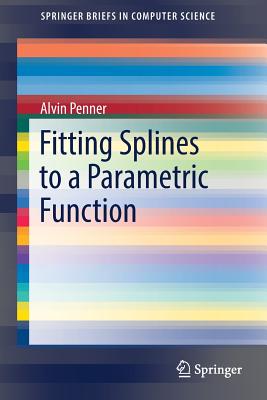This Brief investigates the intersections that occur between three different areas of study that normally would not touch each other: ODF, spline theory, and topology. The Least Squares Orthogonal Distance Fitting (ODF) method has become the standard technique used to develop mathematical models of the physical shapes of objects, due to the fact that it produces a fitted result that is invariant with respect to the size and orientation of the object. It is normally used to produce a single optimum fit to a specific object; this work focuses instead on the issue of whether the fit responds continuously as the shape of the object changes. The theory of splines develops user-friendly ways of manipulating six different splines to fit the shape of a simple family of epiTrochoid curves: two types of Bezier curve, two uniform B-splines, and two Beta-splines. This work will focus on issues that arise when mathematically optimizing the fit. There are typically multiple solutions to the ODF method, and the number of solutions can often change as the object changes shape, so two topological questions immediately arise: are there rules that can be applied concerning the relative number of local minima and saddle points, and are there different mechanisms available by which solutions can either merge and disappear, or cross over each other and interchange roles. The author proposes some simple rules which can be used to determine if a given set of solutions is internally consistent in the sense that it has the appropriate number of each type of solution.
This Brief investigates the intersections that occur between three different areas of study that normally would not touch each other: ODF, spline theory, and topology.
The Least Squares Orthogonal Distance Fitting (ODF) method has become the standard technique used to develop mathematical models of the physical shapes of objects, due to the fact that it produces a fitted result that is invariant with respect to the size and orientation of the object. It is normally used to produce a single optimum fit to a specific object; this work focuses instead on the issue of whether the fit responds continuously as the shape of the object changes. The theory of splines develops user-friendly ways of manipulating six different splines to fit the shape of a simple family of epiTrochoid curves: two types of Bézier curve, two uniform B-splines, and two Beta-splines. This work will focus on issues that arise when mathematically optimizing the fit. There are typically multiple solutions to the ODF method, and the number of solutions can often change as the object changes shape, so two topological questions immediately arise: are there rules that can be applied concerning the relative number of local minima and saddle points, and are there different mechanisms available by which solutions can either merge and disappear, or cross over each other and interchange roles. The author proposes some simple rules which can be used to determine if a given set of solutions is internally consistent in the sense that it has the appropriate number of each type of solution.
Get Fitting Splines to a Parametric Function by at the best price and quality guranteed only at Werezi Africa largest book ecommerce store. The book was published by Springer Nature Switzerland AG and it has pages. Enjoy Shopping Best Offers & Deals on books Online from Werezi - Receive at your doorstep - Fast Delivery - Secure mode of Payment
 Jacket, Women
Jacket, Women
 Woolend Jacket
Woolend Jacket
 Western denim
Western denim
 Mini Dresss
Mini Dresss
 Jacket, Women
Jacket, Women
 Woolend Jacket
Woolend Jacket
 Western denim
Western denim
 Mini Dresss
Mini Dresss
 Jacket, Women
Jacket, Women
 Woolend Jacket
Woolend Jacket
 Western denim
Western denim
 Mini Dresss
Mini Dresss
 Jacket, Women
Jacket, Women
 Woolend Jacket
Woolend Jacket
 Western denim
Western denim
 Mini Dresss
Mini Dresss
 Jacket, Women
Jacket, Women
 Woolend Jacket
Woolend Jacket
 Western denim
Western denim
 Mini Dresss
Mini Dresss





































